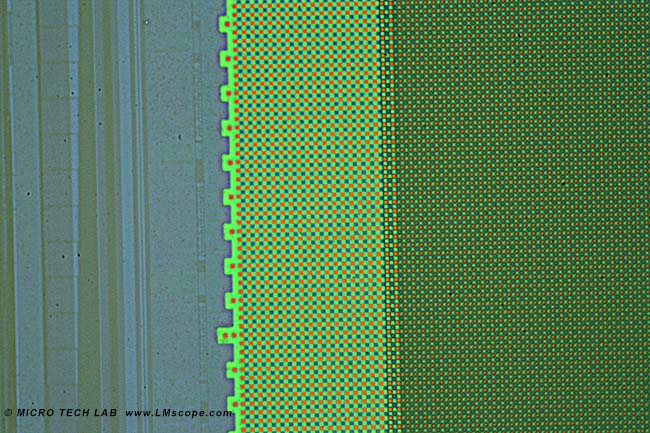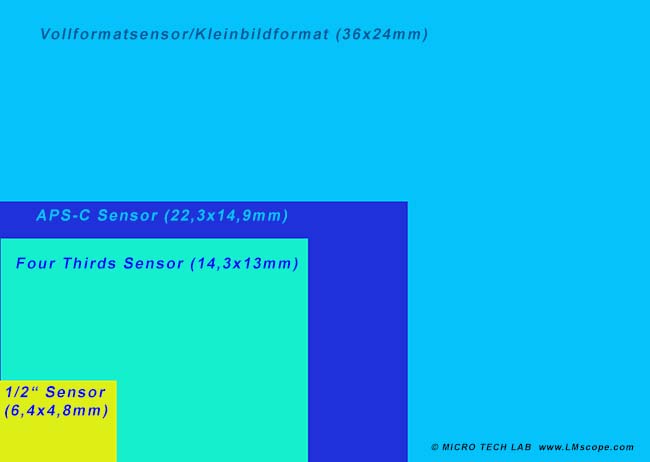

The image sensor – at the core of every camera
The image sensor is the key component in any camera system. Depending on the area application, different semiconductor technologies (CMOS/CCD) are employed. The type of sensor used has a major impact on image quality, resolution capability and shutter speed (frames per second).

Camera sensors are available either as colour or black-and-white (monochrome) systems. Colour sensors are overlaid with a Bayer filter which makes each pixel sensitive to the primary colours (red/green/blue).

Black-and-white sensors without a Bayer filter have the advantage of being more light sensitive because they lack the colour filter that absorbs a significant part of the incoming light. Over the past few years, a great deal of research effort has gone into optimising sensor technology, with the result that colour cameras now outperform black-and-white systems in terms of light sensitivity, too. This makes it difficult to generalise and make a broad statement on which system is better. In any event, it is advisable to check the light sensitivity of the camera models in question. Manufacturers generally state the dynamic range of the sensor and the ISO values. As a general rule, higher light sensitivity is an advantage because it makes shorter exposure times possible.
Black-and-white cameras do not have a colour filter and are used primarily for specialised techniques (e.g. when using low-luminosity fluorescence markers or dyes). However, they are increasingly being crowded out of the market because of constant improvements in the performance of colour cameras. For particularly difficult applications, cooled cameras are used, which have an even better signal-to-noise ratio.
Basically, it can be assumed that larger sensors offer better quality and are more expensive to make. They have more pixels, a higher dynamic range and a better signal-to-noise ratio, and the light sensitivity is also better. For special-purpose microscope cameras, very small sensors are used in most cases. Because of the limited market and their focus on this specific field of application, these sensors are generally very expensive.
Comparing sensor sizes:

The number of pixels correlates to the amount of information within the image, i.e. the higher the pixels, the more details can be captured. In order to achieve a good dynamic range (signal-to-noise ratio), the size of each individual pixel should be large. Those are the two considerations that are key to an appropriate sensor size.
For microscope applications, the required pixel number is affected by the selected magnification. When working at high magnifications, 5 megapixels is entirely sufficient, as the system is limited by the numerical aperture of the microscope lenses. At weaker magnifications (<50 x), as is the case with stereo microscopes, macroscopes and magnifying lenses, for instance, a higher pixel number is better. Because of the Bayer filter, colour cameras generally need higher pixel numbers because otherwise stairlike lines will appear where there should be smooth straight lines.
14.04.2015